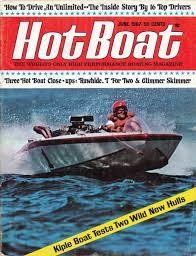Boil the oil in either unit, and certain death will soon follow. Today’s engines have a recirculating water pump installed along with a thermostat to maintain correct engine block temperature. Losing control of the cooling system on an engine can be catastrophic. Not only can you burn the rubber hoses on the engine, you can boil the engine oil as well.
The cooling system, along with an oil cooler installed on most newer higher-performance I/O packages, are used to control engine life. The I/O engine packages of today have alarms on both the cooling system and on the oil system. The cooling system alarm will sound if you have an overheating condition, and the same alarm will sound if you lose oil pressure. This alarm system also has a sensor in the drive oil reservoir that will sound if you run low on outdrive oil.
Most stock high-performance boats built today do not monitor engine oil temperature, but those in the know can read the oil pressure gauge and tell by a drop in pressure that the oil is warm. The next time you run your boat, take a reading of the oil pressure while your engine is cold, and then take a second reading after you have run your boat for 20 minutes. You’ll find about a ten-pound drop in pressure. For the small number of boats that have an oil temperature monitoring system on board, there are less boats that have a means of monitoring outdrive oil temperature.
For some years now, high-performance boaters have been installing what has become commonly called “Drive Shower” outdrives. The Drive Shower feeds unheated raw water to the top of the outdrive bearing cap area by means of a tube or hose from the cavitation plate area to the top of the bearing cap. The question is, how well do these after-market showers work?
For this test, Hot Boat went to Hill Propellers in Santa Ana, California, to test their Drive Shower. We explained our goal: to determine how much temperature decrease would be achieved when a Hill-manufactured Drive Shower was installed. Joel Bronson, owner of Hill Propellers, offered his test data on the outcome from his testing of the Drive Shower. After perusing this information, we took a new Drive Shower (for a Bravo drive) back to Wilkes Marine for installation. The Shower was inspected by Wilkes Marine’s lead technician, Brian Wilson, and installed.
The Drive Shower was made from seamless 303 stainless-steel tubing with a wall thickness of .039. After installing, we then removed the Shower for our test boat: a 23-foot open-bow Cougar with MerCruiser’s 454 Magnum EFI Bravo One package as power. (The reason for removing the Drive Shower was to set a baseline on temperature without the Shower unit installed.) Our means of monitoring the drive oil temperature was by installing a Consolidated Electronics Inc. Gear Smart temperature sensoring unit - a “one off” digital readout unit built especially for Hot Boat. The normal Gear Smart unit uses a VDO gauge for readout. The Gear Smart sensor unit replaces the top vent plug on the Bravo drive.
The basic line information started with the surface water temperature at 79 degrees, along with an ambient air temperature of 88 degrees. The next piece of information came from running the boat. At idle, while in gear (700 rpm) indicated on the boat’s tachometer, the temperature reading was 110.6 degrees. Running the boat for ten minutes to warm up all systems to their normal operating range, a full throttle run was made; 4,650 rpm was indicated and was held for approximately five miles. The drive temperature recorded at the end of the run was 220.9 degrees. A second test was run under the same conditions, and the temperature achieved was 220.7.
Our Cougar was then trailered as the Hill Marine Drive Shower was installed. The test was duplicated, with the same idle temperature recorded at 110.6. With the engine oil warm and the engine temperature already in the normal operating zone, no additional warm-up was needed except for idling out of the 5-mile zone. The same top rpm was achieved (4,650), but with the Drive Shower installed, the oil temperature in the drive dropped 31.3 degrees. The top rpm running temperature dropped down to 189.6. A second test was run under the identical conditions, with an oil temperature drop of 31.0 degrees.
The Drive Shower is not a substitute for annual outdrive maintenance, but knowing that “heat kills,” adding a Drive Shower can add extra life to your outdrive.
This article appeared in HOT BOAT - April 1997, pp. 114-115.


